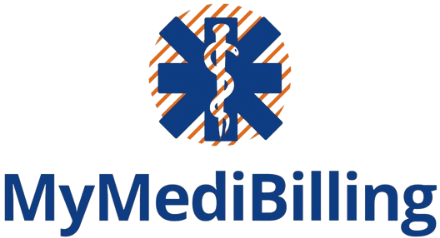Introduction
In the healthcare sector, the accuracy of insurance verification is paramount. When healthcare providers fail to verify a patient’s insurance details correctly, the repercussions can be significant. Inaccurate verification can lead to delayed payments, increased claim denials, and ultimately, a negative impact on the provider’s cash flow.
For instance, a study by the American Medical Association revealed that nearly 20% of claims are denied due to incorrect patient information, which often stems from inadequate verification processes. This not only results in lost revenue but also necessitates additional administrative work to rectify the errors, further straining resources. Moreover, the financial implications extend beyond immediate revenue loss.
Providers may face increased operational costs as they allocate more staff time to follow up on denied claims and reprocess billing. This inefficiency can lead to a cycle of frustration for both healthcare providers and patients. The costs associated with inaccurate insurance verification can accumulate quickly, making it essential for healthcare organizations to invest in robust verification systems that ensure accurate patient data from the outset.
Key Takeaways
- Inaccurate insurance verification can cost healthcare providers time and money, leading to revenue loss and administrative burden.
- Effective insurance verification can improve revenue cycle management by ensuring accurate billing and timely reimbursements.
- Insurance verification directly impacts patient satisfaction by reducing billing errors and ensuring smooth payment processes.
- Streamlining operations and leveraging technology for insurance verification can reduce administrative burden and improve efficiency.
- Comprehensive insurance verification helps healthcare providers mitigate compliance risks and maximize reimbursements.
Improving Revenue Cycle Management with Insurance Verification
Effective revenue cycle management (RCM) is critical for the financial health of healthcare organizations. Insurance verification plays a crucial role in this process by ensuring that patient eligibility and benefits are confirmed before services are rendered. By implementing thorough verification protocols, providers can significantly reduce the likelihood of claim denials and payment delays.
For example, when a hospital verifies insurance details at the point of registration, it can identify potential issues early on, allowing for proactive communication with patients regarding their financial responsibilities. Furthermore, accurate insurance verification contributes to a smoother billing process. When providers have verified information, they can submit claims with confidence, knowing that they meet the necessary criteria for reimbursement.
This not only enhances cash flow but also improves overall operational efficiency. By streamlining RCM through effective insurance verification, healthcare organizations can focus on delivering quality care rather than grappling with administrative challenges.
The Impact of Insurance Verification on Patient Satisfaction
Patient satisfaction is increasingly becoming a focal point in healthcare delivery, and insurance verification plays a pivotal role in shaping the patient experience. When patients encounter issues related to their insurance coverage—such as unexpected out-of-pocket costs or claim denials—they often feel frustrated and dissatisfied with their care experience. By ensuring accurate insurance verification before service delivery, healthcare providers can minimize these negative experiences and foster a more positive relationship with their patients.
Additionally, clear communication regarding insurance coverage can enhance patient trust and engagement. When patients are informed about their benefits and potential costs upfront, they are more likely to feel empowered in their healthcare decisions. This transparency not only improves satisfaction but also encourages patients to seek necessary care without fear of unexpected financial burdens.
Ultimately, effective insurance verification contributes to a more seamless patient journey, reinforcing the importance of accuracy in the administrative aspects of healthcare.
Streamlining Operations and Reducing Administrative Burden
| Metrics | 2019 | 2020 | 2021 |
|---|---|---|---|
| Number of administrative tasks | 150 | 130 | 110 |
| Time spent on administrative tasks (hours) | 500 | 450 | 400 |
| Employee satisfaction with administrative processes (scale of 1-10) | 6 | 7 | 8 |
The administrative burden associated with insurance verification can be overwhelming for healthcare providers. Manual processes often lead to inefficiencies, resulting in wasted time and resources. By adopting automated insurance verification systems, organizations can streamline operations significantly.
These systems can quickly verify patient information against multiple databases, reducing the time staff spend on manual checks and allowing them to focus on more critical tasks. Moreover, automation minimizes human error, which is a common issue in manual verification processes. By reducing inaccuracies in patient data collection and verification, healthcare providers can enhance their operational workflows.
This not only leads to faster claim submissions but also decreases the likelihood of denials due to incorrect information. As a result, organizations can operate more efficiently while simultaneously improving their bottom line.
Mitigating Compliance Risks through Effective Insurance Verification

Compliance with regulations such as HIPAA (Health Insurance Portability and Accountability Act) is essential for healthcare providers. Inaccurate insurance verification can expose organizations to compliance risks, particularly if patient data is mishandled or if claims are submitted without proper authorization. By implementing effective insurance verification processes, providers can ensure that they are adhering to regulatory requirements while safeguarding sensitive patient information.
Additionally, thorough verification helps mitigate risks associated with fraud and abuse in the healthcare system. By confirming patient eligibility and benefits accurately, providers can reduce the chances of fraudulent claims being submitted. This not only protects the organization from potential legal repercussions but also contributes to the integrity of the healthcare system as a whole.
Thus, effective insurance verification serves as a critical component in maintaining compliance and fostering trust within the industry.
Leveraging Technology for Efficient Insurance Verification
The advent of technology has revolutionized many aspects of healthcare administration, including insurance verification. Advanced software solutions now enable providers to automate the verification process, integrating seamlessly with electronic health records (EHR) systems. These technologies allow for real-time access to patient insurance information, significantly speeding up the verification process and reducing manual errors.
Moreover, leveraging technology enhances data analytics capabilities, enabling healthcare organizations to track trends in insurance verification outcomes. By analyzing this data, providers can identify areas for improvement and adjust their processes accordingly. For instance, if a particular payer consistently results in high denial rates due to verification issues, organizations can take proactive steps to address these challenges.
Ultimately, technology not only streamlines operations but also empowers healthcare providers to make informed decisions that enhance their overall performance.
Maximizing Reimbursements through Comprehensive Insurance Verification
Comprehensive insurance verification is essential for maximizing reimbursements in the healthcare industry. By thoroughly verifying patient coverage before services are rendered, providers can ensure that they are billing accurately for the services provided. This proactive approach minimizes the risk of claim denials and underpayments, ultimately leading to improved financial outcomes.
Additionally, comprehensive verification allows providers to identify any potential coverage gaps or limitations in advance. For example, if a patient’s policy has specific exclusions or requires prior authorization for certain procedures, this information can be communicated upfront. By addressing these issues before treatment begins, healthcare organizations can avoid costly delays in reimbursement and ensure that they receive appropriate payment for their services rendered.
Conclusion
Insurance verification services are crucial for healthcare providers as they streamline operations and enhance financial stability. By reducing claim denials and ensuring accurate billing, these services lead to improved cash flow and patient satisfaction. The real return on investment lies in the ability to allocate resources more efficiently, reduce administrative burdens, and focus on delivering quality care. Ultimately, investing in robust insurance verification systems enables healthcare providers to optimize revenue cycles and sustain long-term growth.

